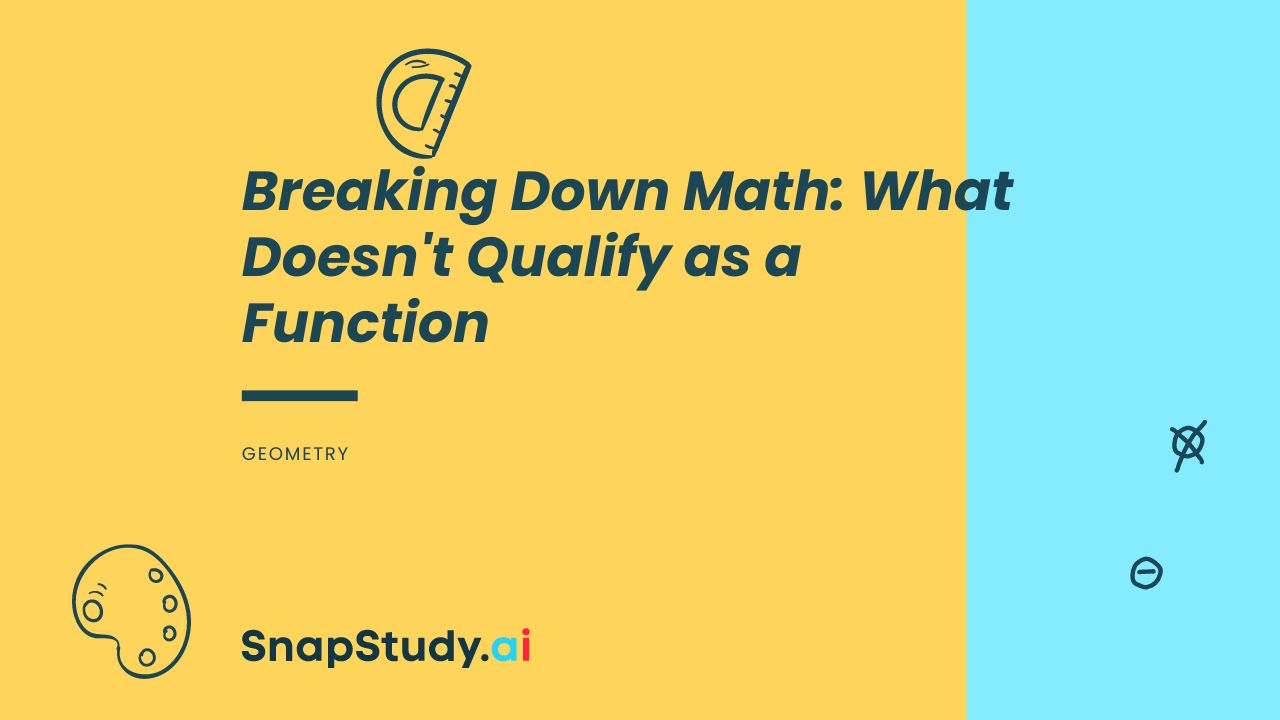In mathematics, the concept of a function plays a pivotal role. It forms the backbone of many mathematical concepts and disciplines. However, the other side of that coin, which often doesn’t get the spotlight it deserves, is the understanding of what doesn’t qualify as a function. This article aims to explore this topic in depth, shedding light on those mathematical relationships that fall short of being classified as a function.
Understanding Functions: A Deeper Dive
Before we delve into what doesn’t qualify as a function, it is crucial to first establish a thorough understanding of what a function is. A function, in the simplest of terms, is a special type of relation between a set of inputs and a set of permissible outputs. The defining characteristic of a function is that each input is related to exactly one output.
To illustrate this, let’s consider an example. One of the most basic functions in mathematics is the one that relates each real number x to its square x^2. In this function, every input ‘x’ corresponds to one and only one output, which is its square.
The Vertical Line Test: An Essential Tool
One of the simplest, yet most effective ways to test whether a graph represents a function is to use the vertical line test. This test, a fundamental tool in the study of functions, states that a graph represents a function if and only if all vertical lines intersect the graph at most once. If any vertical line intersects the graph more than once, the graph does not represent a function. This is a straightforward yet powerful method to visually determine if a relation qualifies as a function.
Relations that Do Not Qualify as Functions: A Closer Look
Now that we have a firm grasp on what constitutes a function, let’s examine some examples of relations that do not qualify as functions. These are mathematical relationships that, for various reasons, fail to meet the criteria necessary to be classified as a function.
Circles: A Classic Example
When it comes to relations that do not qualify as functions, one of the first examples that comes to mind is the equation of a circle. A circle does not represent a function because it inevitably fails the vertical line test. For any given x-value on a circle’s circumference, there are two possible y-values – one on the upper half of the circle and one on the lower half. This violates the fundamental property of a function, where each input corresponds to exactly one output.
Absolute Values: A Twisted Tale
While the absolute value function does pass the vertical line test and therefore qualifies as a function, the inverse of the absolute value function does not. This is because for every y-value, there are two corresponding x-values, one positive and one negative. This relationship does not meet the criteria for a function, as it violates the rule that every input must correspond to exactly one output.
Vertical Lines: A Simple Case
The equation of any vertical line, in the form of x = a where ‘a’ is a constant, does not qualify as a function. The reason is simple: it does not pass the vertical line test. Any vertical line, regardless of its position on the coordinate axis, will always intersect more than once with the graph of a vertical line equation. This disqualifies it from being considered a function.
The Importance of Differentiating Functions
In the landscape of mathematics, understanding what does not qualify as a function is just as crucial as understanding what does. By gaining a thorough understanding of these differences, you can enhance your ability to analyze and interpret mathematical relations and their graphs. It serves to broaden your mathematical horizons, allowing you to better appreciate the complex and fascinating world of functions and their counterparts.





